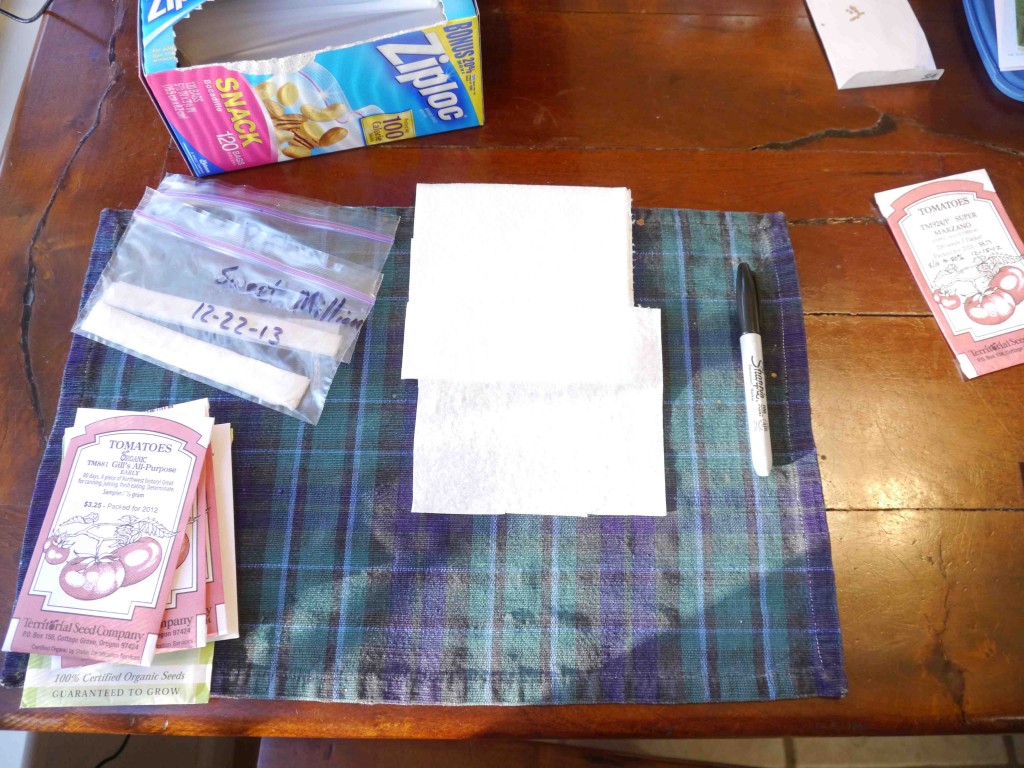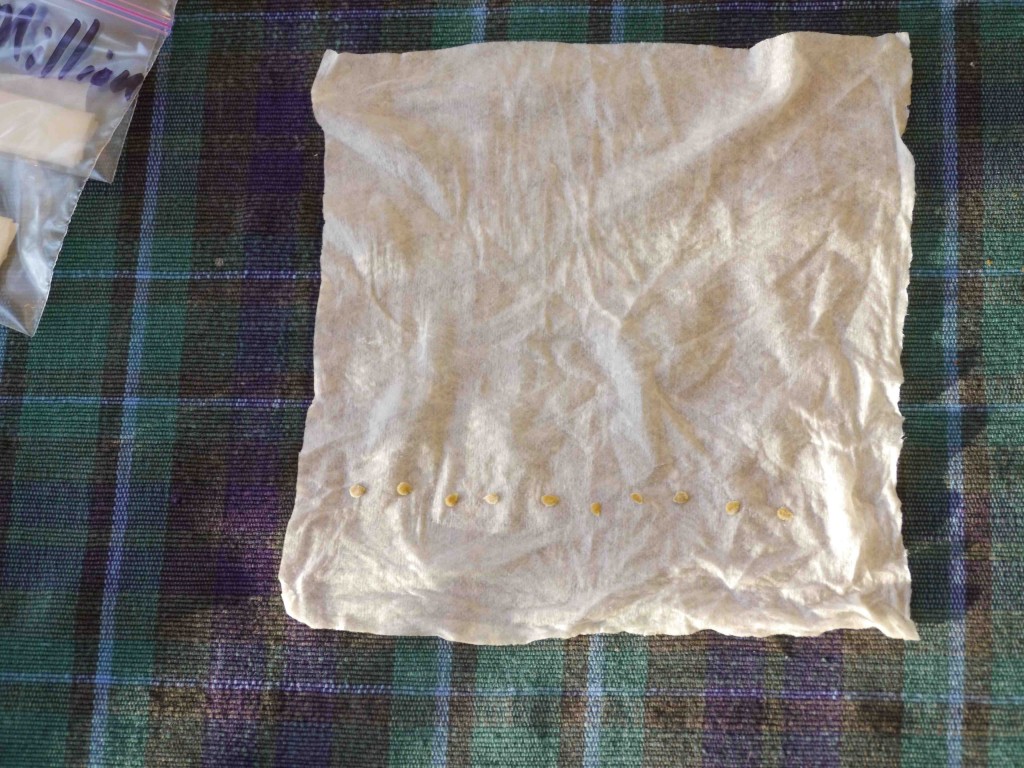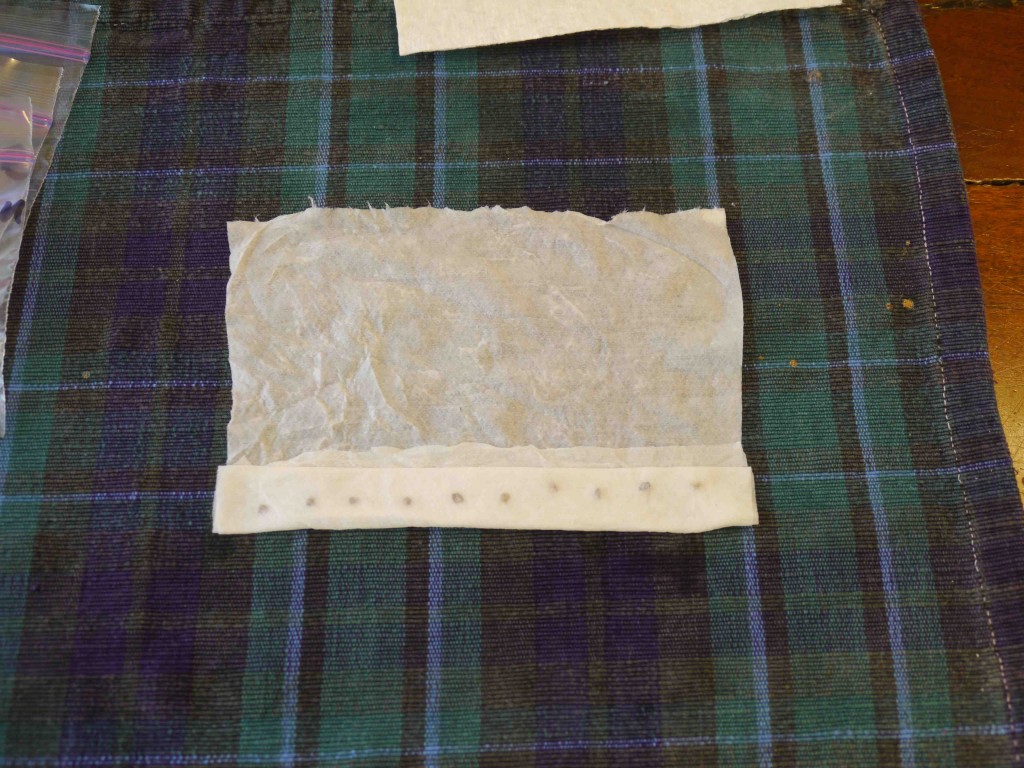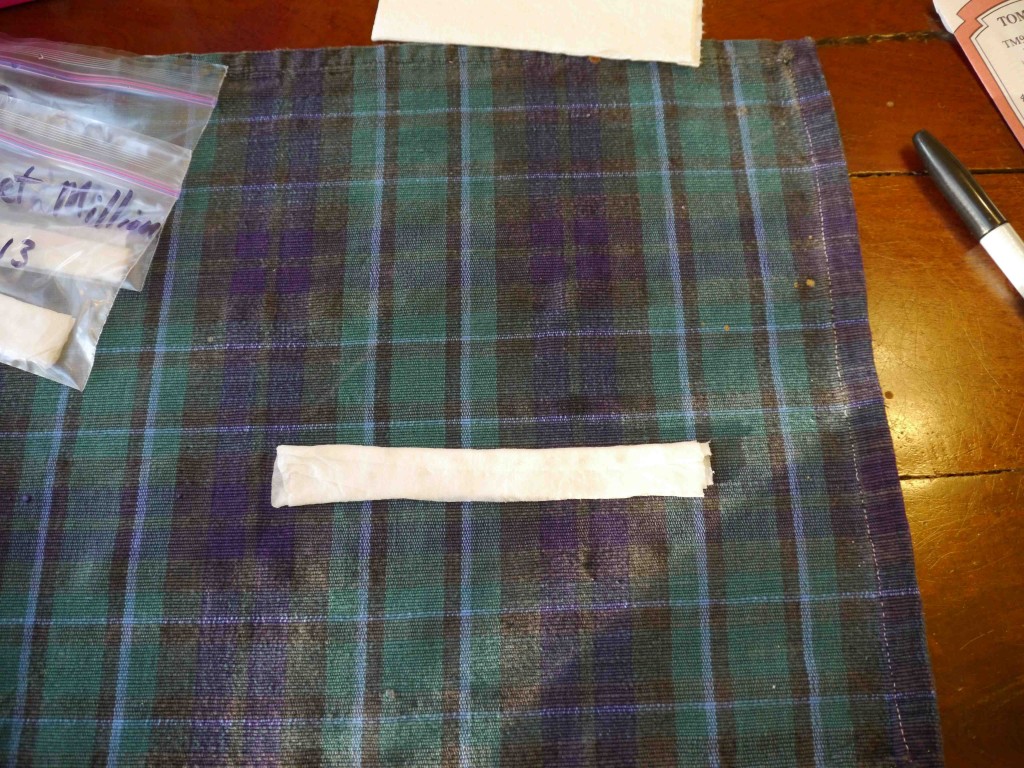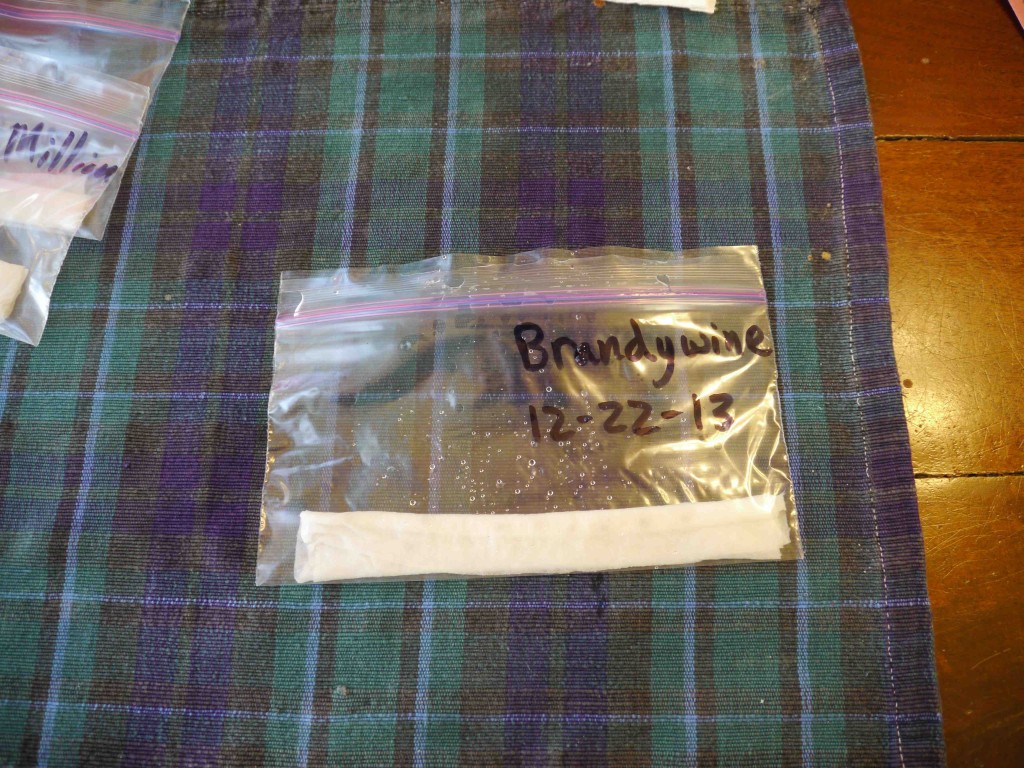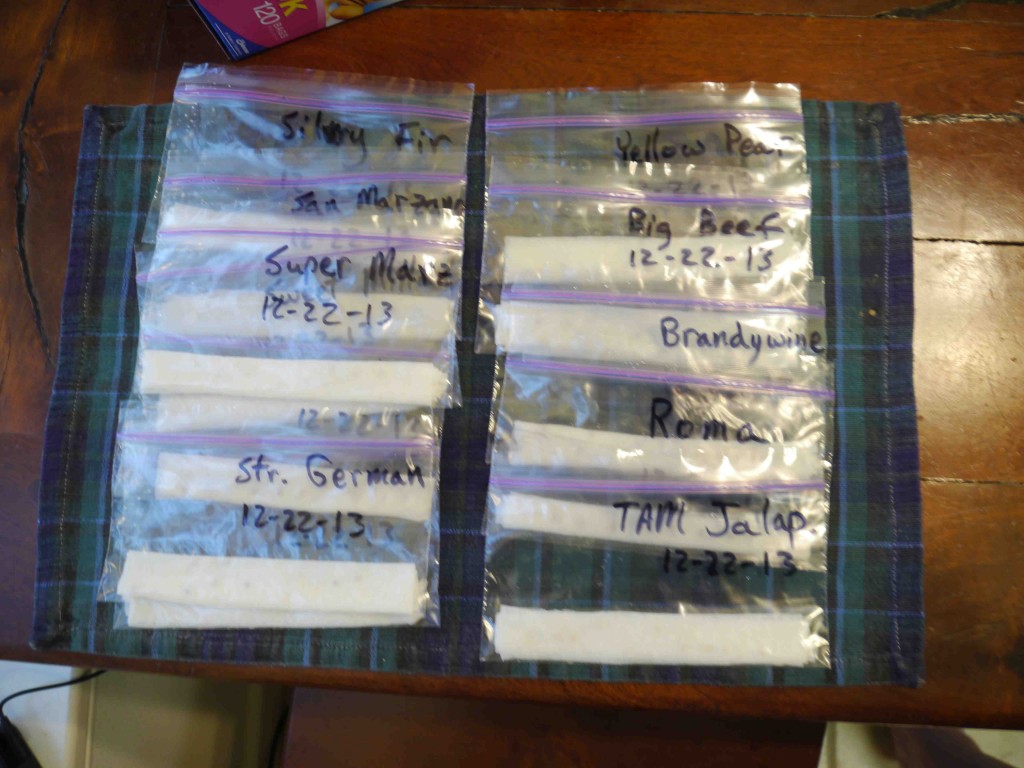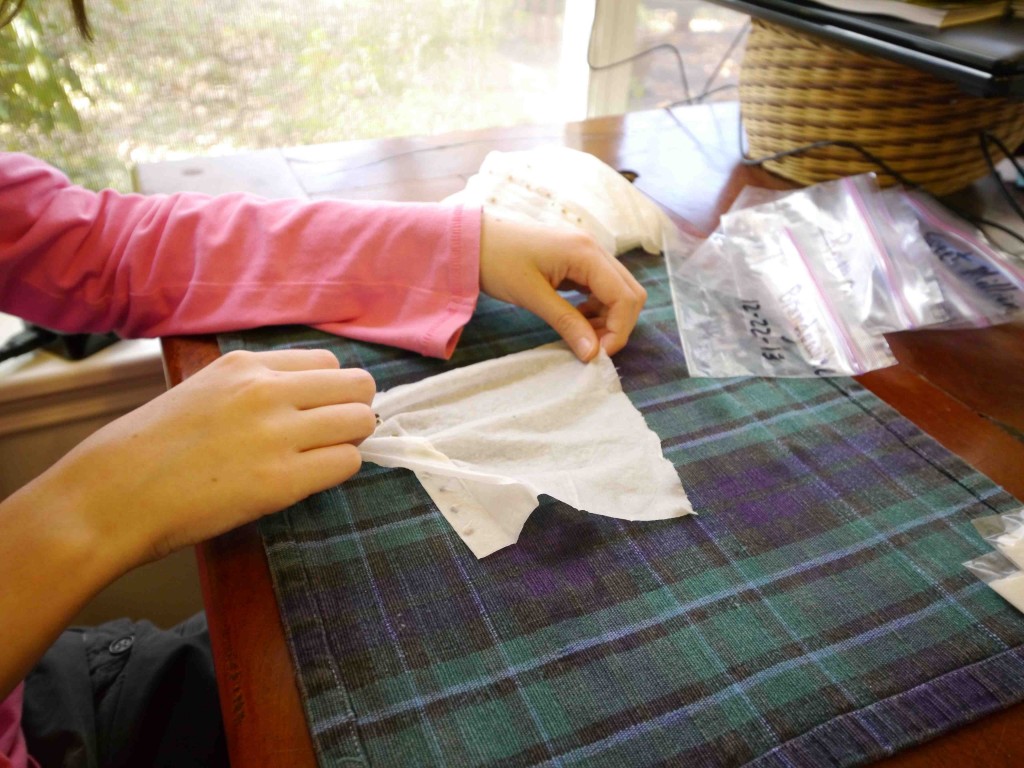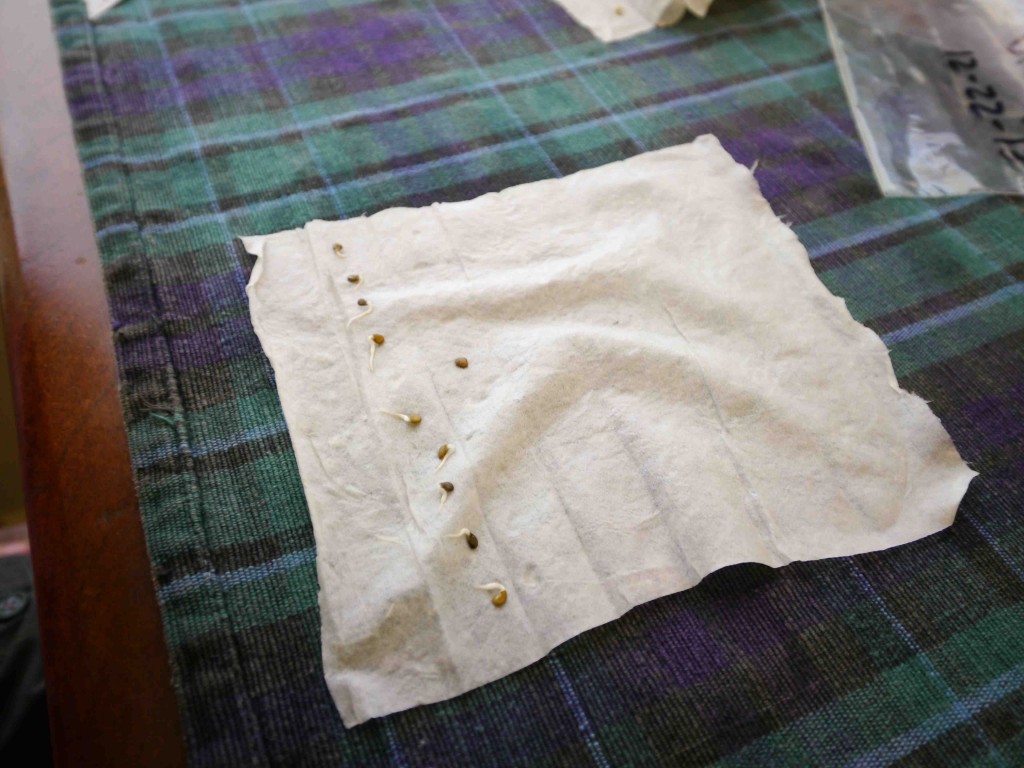From time to time you may find yourself wondering if your garden seeds are still good. Maybe you have a leftover partial packet of your favorite tomato variety from a few years back, an untouched bag of snap peas you don’t want to just throw out, or even some heirloom seeds that were passed on to you from a relative. Finding out that your seeds are bad after you’ve planted and waited several days or even weeks for the seeds to sprout can be discouraging and have a big impact on your gardening plans. Here is a quick method that will get you the answer well before planting so you can give yourself the best chance of having a successful gardening season.
Supplies
You will need a few very basic things to do a germination test:
- Seeds
- Plastic bags
- Paper towels
- Sharpie
- Water
You will need a quarter of a paper towel for each group of seeds you want to test. Cut paper towels into quarters as needed.
Wet the paper towels with water and squeeze out excess water so they are damp but not dripping wet.
Using a Sharpie, label plastic bags with the seed varieties to be tested and the date. The small snack size bags work well.
Process
Follow these simple steps to perform a germination test.
Spread out the damp paper towel and place 10 seeds in a row as shown.
Fold the lower edge of the paper towel over the seeds and then continue to fold up the paper towel.
The seeds need to be in contact with the wet paper towel so lightly press down on it when wrapped up.
Place the paper towel in the plastic bag and seal about 2/3 of the way closed. Seeds need air to germinate so the goal is to keep the moisture in while also allowing for a little air. Repeat for each batch of seeds to be germination tested.
Keep the bags in a warm location and allow to sit for the typical time it takes that particular seed type to germinate. Normally just anywhere indoors at room temperature will be warm enough. For tomatoes, a week at about 70°F is enough. Peppers need closer to 10 – 14 days at about 70°F.
Results
After the typical germination time has passed, open up the bag and remove and carefully unwrap the paper towel.
Count the number of sprouts you’ve got.
It’s now easy to determine germination percentage since you started with 10 seeds. Seven out of 10 equals 70% germination, 3 out of 10 equals 30% germination, etc. Write the germination percentage and test date on the package of seeds so you have the information recorded.
Generally, tomato and pepper seeds will maintain a high germination rate for several years. Other seed types might only be good for a year or two. Once your germination rates get down to 50 – 60%, it’s probably time to reorder or at least sow a little heavy at planting time to make up for the seeds that won’t germinate. Germination testing will allow you to make informed decisions to ensure your gardening season gets off to the best possible start.

